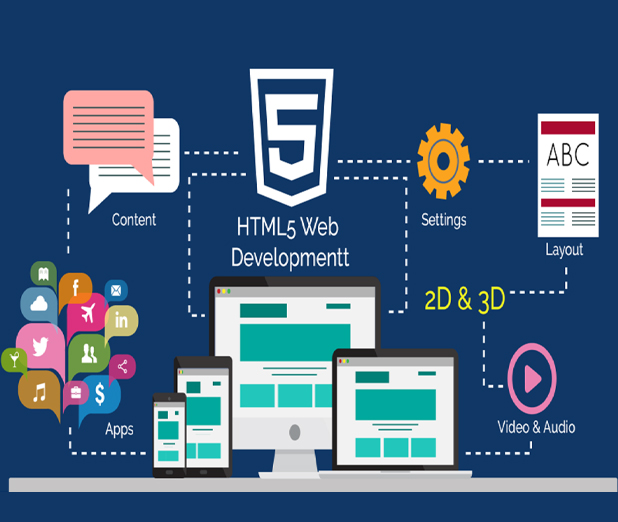AppliMarkets: Your Go-To Resource for App Insights
Explore the latest trends, reviews, and tips in mobile applications.
HTML5 Development: Where Old Meets New in Web Wonders
Discover how HTML5 bridges the gap between classic techniques and modern web magic. Unleash your creativity with our expert insights!
Understanding HTML5: A Beginner's Guide to Modern Web Development
HTML5 is the latest version of the HTML (Hypertext Markup Language) standard, which is fundamental for creating modern web pages. It introduces new features and elements that enhance the capabilities of web developers, allowing them to build more interactive and engaging websites. Some of the key advancements include new semantic elements like <article>, <section>, and <header>, which help structure content more meaningfully. Additionally, HTML5 supports multimedia elements such as <audio> and <video>, enabling developers to integrate rich media without relying on third-party plugins.
As a beginner in web development, understanding HTML5 is crucial for building effective websites. Not only does it streamline the coding process, but it also improves SEO (Search Engine Optimization) by making content more accessible to search engines. Here's a brief overview of HTML5 features that every aspiring web developer should know:
- User-friendly forms with new input types like
dateandemail. - Canvas element for drawing graphics on the fly.
- Geolocation API to access user location features.

The Evolution of HTML: How HTML5 Transforms Traditional Web Practices
The evolution of HTML has been a significant force in shaping the way we interact with the web. Since its inception, HTML has undergone several transformations, culminating in the release of HTML5. This latest version brings a multitude of new features and improvements, making it easier for developers to create rich, interactive web applications. One of the standout features of HTML5 is its support for multimedia elements, including the <audio> and <video> tags, which allow for seamless integration of media without relying heavily on external plugins.
Furthermore, HTML5 has introduced structural elements that enhance the semantics of web content, such as <header>, <footer>, and <article>. These tags help define the layout of a webpage more clearly, improving accessibility and SEO practices. The canvas element has also revolutionized online graphics, enabling developers to create dynamic visuals directly in the browser. Overall, HTML5 not only transforms traditional web practices but also sets a new standard for future web development.
HTML5 Features You Didn't Know You Needed: Enhancing User Experience
HTML5 brings a plethora of features that significantly enhance user experience. Among these features, the Canvas API stands out, allowing developers to create dynamic graphics directly within the browser. This means you can draw shapes, animations, and even complex visualizations such as charts and graphs without the need for external plugins. Another game-changer is the Geolocation API, which provides users with the ability to share their location with web applications. This feature can personalize content and improve engagement by providing location-based services, making your website more relevant to visitors.
Moreover, HTML5 introduces the concept of Offline Storage through technologies like Local Storage and IndexedDB. This capability allows web applications to store data locally on the user's device, ensuring that your users can access them even without an internet connection. Additionally, the Audio and Video APIs facilitate seamless media playback without the need for third-party plugins, contributing to a more streamlined and enjoyable user experience. By leveraging these features, developers can create websites that are not only functional but also engaging and user-friendly, thus paving the way for a higher retention rate and overall satisfaction.